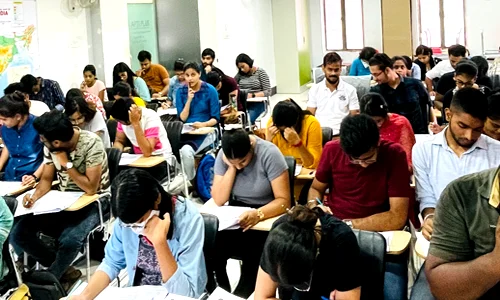



India–Oman ties, central to India’s West Asia policy, have deepened into a strategic partnership anchored in defence, trade and culture. Duqm Port access and Hormuz proximity enhance maritime security. The proposed CEPA promises trade growth, while alignment with Oman Vision 2040 can offset regional instability and Chinese influence.
Click to View MoreThe India-Russia relationship, elevated to a "Special and Privileged Strategic Partnership," remains resilient amidst a complex multipolar world. Historically anchored in defence cooperation, the partnership is now driven by energy security, evidenced by soaring crude oil imports and collaboration on the Kudankulam Nuclear Power Plant.
Click to View MoreThe Global Energy Leaders’ Summit 2025 in Puri (Dec 5–7), hosted by Odisha and the Tony Blair Institute, focuses on “Powering India: Sufficiency, Balance, Innovation.” It supports India’s pillars of energy access, efficiency, sustainability, and security while advancing cooperation, clean energy transition, technology, and Net-Zero 2070 goals.
Click to View MoreIndia’s National Green Hydrogen Mission (NGHM) aims to position the country as a global leader in green hydrogen by 2030. Green hydrogen, produced using renewable energy, offers a clean alternative to fossil fuels, helping decarbonize hard-to-abate sectors like steel, fertilizers, mobility, and shipping. The Mission focuses on scaling production, promoting domestic manufacturing, fostering R&D through public-private partnerships, developing port-based hydrogen hubs, and implementing certification standards. Despite challenges like high costs, infrastructure gaps, and technology readiness, strategic policy support, financial incentives, and skill development are driving India’s transition toward a sustainable, low-carbon, and energy-secure future.
Click to View More
India encourages hybrid solar-wind-storage systems to ensure a steady clean energy supply, backed by government policies, despite challenges like high costs and land shortages. To achieve sustainable energy goals and become a global leader, India needs to focus on advanced storage solutions, smart grid development, and adaptable regulations.
Click to View MoreThe US has imposed sanctions on Russian oil giants Rosneft and Lukoil, raising the risk of secondary sanctions on countries and companies that continue to trade with them. India, a major importer of Russian crude, faces challenges as its refiners rely on US dollars, global financial systems, and insurance services for oil transactions. While there are no direct sanctions on Russian oil, the threat has prompted India to reconsider imports, diversify energy sources, strengthen domestic production, and expand renewable energy. The government and refiners are exploring risk mitigation strategies to maintain energy security while balancing economic and diplomatic interests.
Click to View More
India’s first National Policy on Geothermal Energy, led by MNRE, marks a major step toward Net Zero 2070. It promotes 24/7 clean power through fiscal incentives, repurposed oil wells, and joint ventures to develop 10 geothermal provinces, strengthening India’s sustainable energy transition.
Click to View MoreIndia aims for 500 GW renewable capacity by 2030 and net-zero by 2070, relying on critical minerals like lithium and cobalt. To reduce import dependence, it launched the National Critical Minerals Mission, promoting domestic mining, recycling, circular economy, and public-private partnerships for energy self-reliance.
Click to View MoreThe IEA’s Renewables 2025 report highlights rapid global energy transition, with Solar PV driving growth. India to become the second-largest market, but addressing grid bottlenecks, transmission expansion, and DISCOMs’ financial fragility is crucial to sustain progress and meet COP28 goals.
Click to View MoreIndia and Qatar have strengthened their Strategic Partnership, advancing energy security, trade diversification, and digital collaboration. By leveraging LNG supplies, expanding non-hydrocarbon sectors, and engaging the Indian diaspora, both nations drive mutual economic growth and investment.
Click to View MoreIsobutanol offers a breakthrough in biofuels, with potential to decarbonize India’s diesel-driven transport sector beyond ethanol blending. Despite cost and engine challenges, strong policy support and innovation can enable its adoption, advancing cleaner energy and India’s self-reliance goals.
Click to View MoreIndia’s power-sector CO2 emissions fell 1% in early 2025, driven by a 69% clean energy surge, hydropower gains, and mild weather—signaling a possible emissions peak before 2030 and marking a historic shift in India’s energy transition.
Click to View More
© 2025 iasgyan. All right reserved